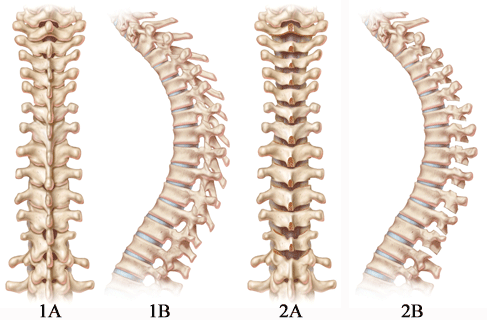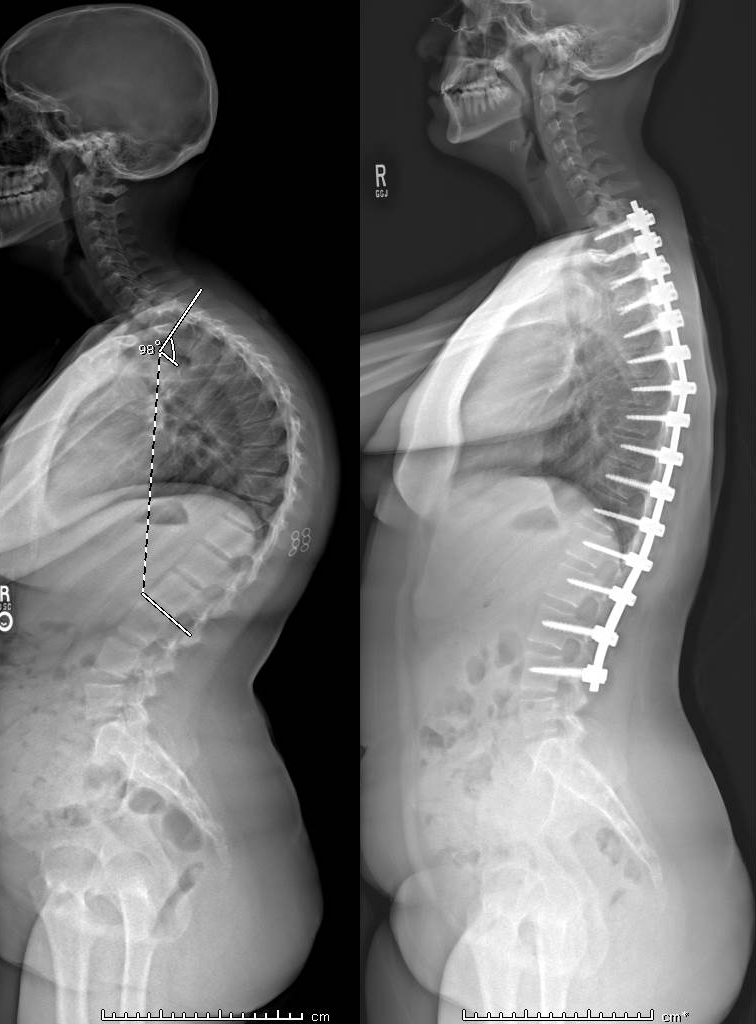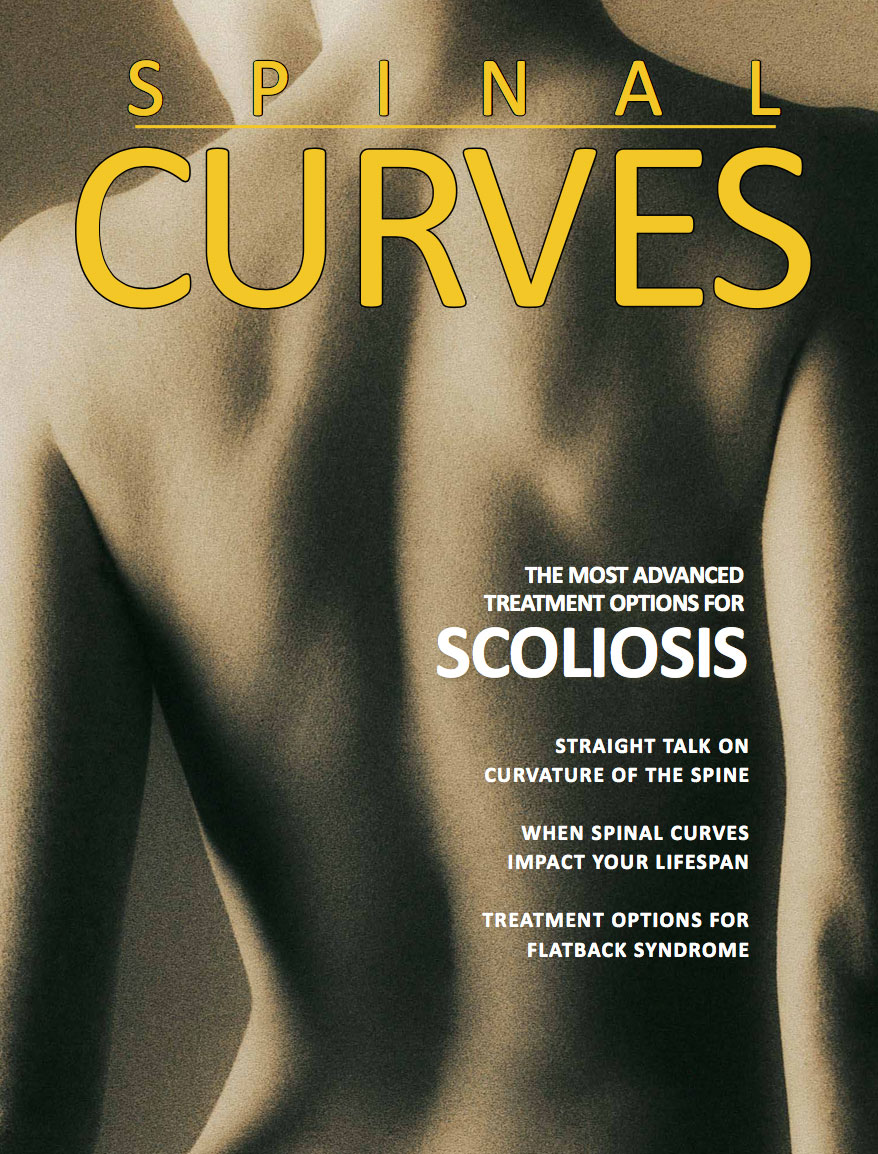Scheuermann's Disease in Adolescents and Adults
Scheuermann's kyphosis, manifesting in a “roundback” or “hunch” deformity, is a developmental type of kyphosis occurring while the body is still growing. Normal vertebrae are rectangular shaped and stacked on top of one another like building blocks with a soft cushion disc between each one. When Scheuermann's kyphosis occurs, the front of the vertebrae wedge forward and closer together in a triangular shape. This causes the spine or curve to move forward and closer together in a triangular shape and the spine to curve forward more than normal.
 Scheuermann's kyphosis develops in adolescents while their bones are still growing. It happens to about 0.1% percent of people in this age group and occurs a little more often in boys as girls.
Scheuermann's kyphosis develops in adolescents while their bones are still growing. It happens to about 0.1% percent of people in this age group and occurs a little more often in boys as girls.
This kyphosis, or roundback, can lead in larger curves to difficult spinal deformities and pain. Initial treatments, depending on the age of the patient, residual growth, and size of curve, can include physical therapy, bracing, or injections. In larger or progressive curves resistant to conservative treatment, surgery is an option. This can be done minimally invasively via a dual VATS/percuateous approach, or a single approach Ponte procedure.
In adults in whom Scheuermann's kyphosis is untreated, it can be a cause of progressive roundback, pain, and overall spinal imbalance.
Ponte Procedure
The Ponte procedure is a less invasive, single approach to Scheuermann's Kyphosis or Severe Scoliosis, in which small osteotomies are made in the spinal segments in conjuction with reliable segmental fixation such as pedicle screws. This allows the treatment of complex or severe spinal deformities from single posterior approach.
Pre-operatively, the spine has a severe kyphosis/roundback (1A and 1B). First little cuts (Ponte Osteotomies) are made at each spinal level that has kyphosis (2A and 2B). After screws are added (3), the rods are placed (4) and the kyphosis corrected (5).
 Case Study
Case Study
Severe Scheuremanns Kyphosis
This 13 year old girl with severe kyphosis/scheuermanns disease presented with severe physical and cosmetic deformity and apex pain over the kyphosis. She had a Ponte Procedure: T2-L4 posterior spinal reconstruction, posterior column ostetomies (Ponte osteotomies). Her kyphosis corrected from 98 degrees pre operatively to 45 degrees (normal). 6 months later she is back to her normal life, 3 inches taller, and actually more physically active now that her pain is gone.






